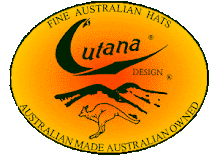Wednesday 29th September
As well as pot noodles, our diet while camping has largely consisted of sausage and increasingly stale nan bread. This has occasionally been relieved by a visit to an all too rare roadside eating establishment, and on crossing the Karatau mountains and reaching relative civilisation, we were looking forward to the possibility of a decent meal. Thus it was with a sense of eager anticipation that we arrived at the wild west town of Cheyenne, or Shayan in its Kazakh incarnation, which boasted this imposing gateway as evidence of its supposed status.

In China any self-respecting town of this size would contain at least several dozen well patronised eating places. So Bakhram bounced off happily to scout for one, but returned to report woefully that he had only found one cafe and it had run out of food. That is Kazakhstan for you. Heigh ho. So it was back to the local shop to stock up on sausage and bread again - although at least the bread was fresh.
However after several hours riding across the steppe the following day ......
.......we were rewarded when we reached the main Shymkent-Turkestan road to find this delightful little restaurant, where Zorbee polished off half a bale of hay while we tucked into shashlik and laghman, with a pile of nan and a big pot of milky tea.

My husband enjoys his meals, and is continually pestering me as to what the food is like in Kazakhstan, so for his benefit and yours, here is a very brief pictorial guide to the main elements of Kazakh cuisine.

Laghman is a dish of spicy meat and vegetables served on a bed of noodles. You cannot see the noodles under the topping in the photo above, which also shows the plate of bread and teapot of milky tea which is commonly served with meals.

Shashlik - barbecued meat on skewers.

Manti - steamed dumplings filled with spiced lamb or beef, rather like large ravioli. Pelmeni are a smaller version like Chinese steamed dumplings.

Plov - a rice based dish cooked with meat, carrot and onion. It may also contain raisins.

This is plov being cooked up on a street brazier.
 For my part I can never understand how very large men can possibly be comfortable riding on very small donkeys, when they are in possession of perfectly good legs which nearly reach the ground in any case - and if they have a donkey they will not walk even a step.
For my part I can never understand how very large men can possibly be comfortable riding on very small donkeys, when they are in possession of perfectly good legs which nearly reach the ground in any case - and if they have a donkey they will not walk even a step. Above - herdsman Talgat who invited me to join him for chai near Shayan.
Above - herdsman Talgat who invited me to join him for chai near Shayan.







































